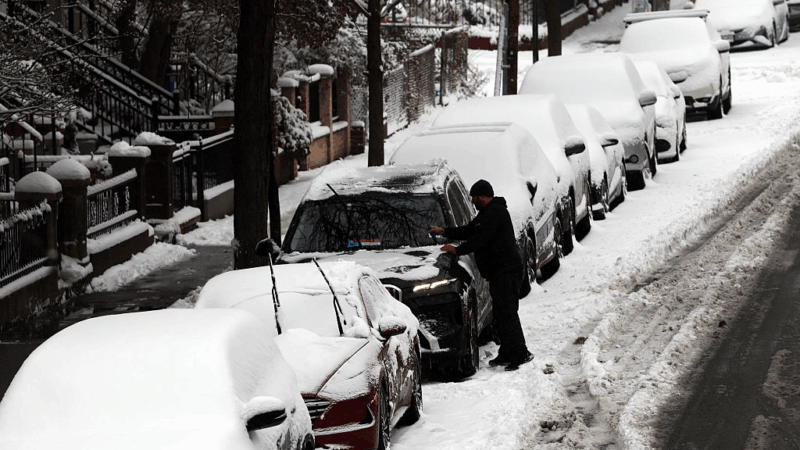A story about a deadly TikTok boat-jumping challenge went viral. Then it fell apart
By Philip Marcelo and Leon Ramirez
As the July 4 holiday approached, a local news report in Alabama warned of a deadly TikTok challenge that involved jumping from a speeding boat.
“Last six months we have had four drownings that were easily avoidable,” Jim Dennis, captain of the Childersburg Rescue Team, told the local ABC affiliate station in Birmingham, Alabama, in a story that aired July 3. “They were doing a TikTok challenge.”
National and international news outlets snapped up the report, cautioning about the trend. But Alabama’s main public safety agency says while there have been boating fatalities this year, no such deaths have been reported. A spokesperson for TikTok also says no boat jumping challenge is trending on its platform.
Here’s a closer look at the facts.
CLAIM: Four people attempting a viral TikTok challenge have died jumping from moving boats in Alabama recently.
THE FACTS: The Alabama Law Enforcement Agency, which oversees the state’s public safety agencies, tweeted on Monday to dispel the viral rumors.
The agency said its Marine Patrol Division had “no records of boating or marine-related deaths that could be directly linked to TikTok or a trend on TikTok.”
It noted that one person was fatally injured after jumping from a moving boat in 2020 and a similar case happened in 2021, but that neither death was linked to TikTok.
In a follow up email to The Associated Press, the agency provided details about six water-related deaths marine patrol investigated so far this year. None of the incident reports mentions TikTok or any such challenge.
On July 8, for example, a 79-year-old man drowned after falling off his boat without a life vest while fishing overnight on a river. A day earlier, a 65-year-old man drowned after he got off a pontoon boat to help a dog in a lake.
The other fatalities included a 19-year-old who crashed his jet ski into a tree in May and a man who apparently drowned in January after the vessel he was on struck a bridge and capsized.
People magazine, the New York Post and a number of other major outlets that initially reported on the TikTok challenge deaths have since updated their stories to include the state’s response.
But social media users, in English and in Spanish, are still sharing the claims as accurate. Some even include videos purporting to show the victims.
“Police say at least 4 people have died doing the TikTok boat jumping challenge,” wrote one Twitter user in a widely shared post that included various video clips of people diving off moving boats. “When they jumped out of the boat, they literally broke their neck … instant death.”
Meanwhile Dennis, the local first responder quoted in the original story, walked back his comments after state officials weighed in this week.
He told AL.com, another local news outlet in Alabama, that his remarks during an interview about boating safety were taken out of context, but he maintained that his organization has responded to reports of people who jumped off boats this year.
“It got blown way out of proportion,” said Dennis, who didn’t respond to requests for additional comment this week.
The ABC affiliate in Birmingham also declined to comment, but in a story Monday about the state’s response, the station included Dennis’ full, unedited interview.
Ben Rathe, a spokesperson for TikTok, stressed “boat jumping” has never trended on platform, echoing a statement the company’s office in Mexico City previously provided in Spanish.
TikTok also said it does not comment on things that are “not part (of the platform) / are not trending on the platform.”
Like other social media companies, TikTok has seen any number of “challenges” go viral over the years, from the potentially hazardous and destructive to the outright criminal and deadly.
Elizabeth Losh, an American Studies professor at William & Mary, a university in Williamsburg, Virginia, who has studied TikTok trends, confirmed some posts featuring people jumping off boats are visible on the site — including one from 2019 with the hashtag #boatjumpchallenge — but don’t appear to be particularly viral or widespread.
She also noted TikTok has placed warning labels over some of the posts.
The social network’s community guidelines prohibit users from showing or promoting “ dangerous activities and challenges,” which includes “dares, games, tricks, inappropriate use of dangerous tools, eating substances that are harmful to one’s health, or similar activities that may lead to significant physical harm.”
___
Ramirez reported from Mexico City. Associated Press reporter Karena Phan in Los Angeles also contributed to this story.
Jeffrey R. Holland, next in line to lead Church of Jesus Christ of Latter-day Saints, dies at 85
Jeffrey R. Holland led the Quorum of the Twelve Apostles, a key governing body. He was next in line to become the church's president.
Winter storm brings heavy snow and ice to busy holiday travel weekend
A powerful winter storm is impacting parts of the U.S. with major snowfall, ice, and below zero wind chills. The conditions are disrupting holiday travel and could last through next week.
Disability rights advocate Bob Kafka dead at 79
Bob Kafka was an organizer with ADAPT (American Disabled for Attendant Programs Today), a group which advocates for policy change to support people with disabilities.
‘It’s behind you!’ How Britain goes wild for pantomimes during the holidays
Pantomimes are plays based on a well-known story — often a fairy tale — which are given a bawdy twist. The audience is expected to join in throughout, shouting as loudly as they can.
Kennedy Center vows to sue musician who canceled performance over Trump name change
The Kennedy Center is planning legal action after jazz musician Chuck Redd canceled an annual holiday concert. Redd pulled out after President Trump's name appeared on the building.
Our top global photo stories from 2025: Fearless women, solo polar bear, healing soups
These stunning photos include a polar bear in a Chinese zoo, a teen in Zambia facing an uncertain future, Mongolian kids watching TV in a tent, a chef prepping a bowl of good-for-you soup.







